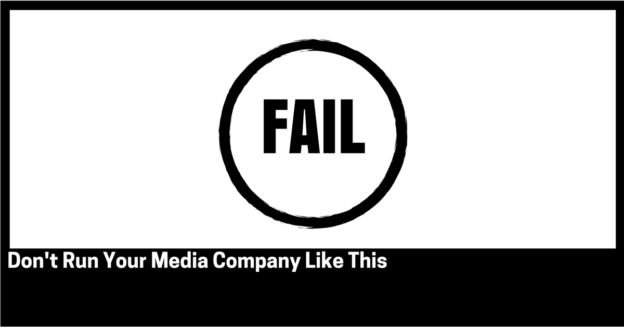The XYZ Newspaper puts a paywall up each time you go back to a post.
This business model is laughable.
What follows is what I call The Economics Of Publicity…
I want to tell a story; I attended a workshop some years ago hosted by an outlet, and they asked, “what business are outlets in?”
Many of Publicists, Marketers and PRs in the room, eager to please, started shouting out various words: “storytelling,” “influencing public opinion,” “telling the truth,” and so on.
I waited for the melee to subside and I quietly said, “Advertising,” to which she said, “Yes, advertising!”
Let us explore why that is the case and what that means down the rabbit hole we go!
The Publicity Ecosystem
Let us start off with the characters in the publicity ecosystem. There are the users, the customers, the storytellers and the outlets:
- The users of published content are the consumers;
- The customers of published content are generally advertisers (and in some instances where there is high reader loyalty, it is predominantly the consumer.) The customers can be the brands, companies and people who want to get their ideas, stories, products in the public eye. Advertising is a paid version of storytelling;
- Just like the customers, the storytellers are also brands, companies and people who want to get their ideas, stories, products in the public eye, but they want to do it in a more cost-effective The storytellers are a free version of storytelling. This is what you’re is aiming to be; and
- The outlets have an audience of consumers and are the publishers.
Advertisers purchase ads, which are usually priced per view (usually per 1,000 impressions.)
If an outlet does not have loyal paying consumers, then their revenue is likely generated through advertisers.
Therefore, the more paid subscription customers an outlet can attract, the more revenue they can generate.
Likewise, the more views or consumers an outlet can attract, the more revenue they can generate.
So, in order to make revenue, outlets need to have a lot of subscribers on their books or generate a lot of views or consumers.
Being paid means that outlet incentives are somewhat be based on two things: loyalty to consumers or loyalty to advertisers.
The Consumer-Advertiser Loyalty Continuum
Outlets enjoy a range of loyalty from free to paid for consumers.
Consumers can come and go as they please, dip in and out of the content they choose to consume, all the way to the other end of the continuum of habitually consuming content issue “front to back.”
Here are some imaginary examples of the different ends of the loyalty spectrum for illustration purposes:
- The Fictitious Post is a subscription-based outlet with many paying consumers. This outlet has no advertisers, as their revenue is generated from consumers. In this instance, the consumers are loyal, and it could be argued that the outlet is loyal to their consumers – providing long form, evergreen, nuanced content. In this case, The Fictitious Post consumers may not read many different similar outlets in addition; and
- The Fictional Guardian is a single-use based outlet with many non-paying consumers. This outlet has many advertisers, as their revenue is generated from advertisers. In this instance, the advertisers are loyal, and it could be argued that the outlet is loyal to their advertisers, providing access to many consumers. In this case, The Fictional Guardian consumers may read many different similar outlets in addition.
The Consumer-Advertiser Loyalty Continuum is what helps shape the types of users, the types of customers and the types of stories the outlets publish.
The XYZ Newspaper is close to The Fictional Guardian, that is a single-use based outlet with many non-paying consumers. This outlet has many advertisers, as their revenue is generated from advertisers.
Yet that has tried to mix that model with the Fictitious Post, that is a subscription-based outlet with many paying consumers. This outlet has no advertisers, as their revenue is generated from consumers
You can have both revenue streams; it pissed customers off.
You’re making money off them twice.
Especially when The XYZ Newspaper syndicates their content.
None of it is unique, thus why would people pay for it when it is free elsewhere.
Yes, the exact wording (copyright) is unique, but consumers don’t care about who owns the Intellectual property, or how good the prose is for news content.
Customers want the news content, or they want nuanced opinions.
Both can’t coexist.

